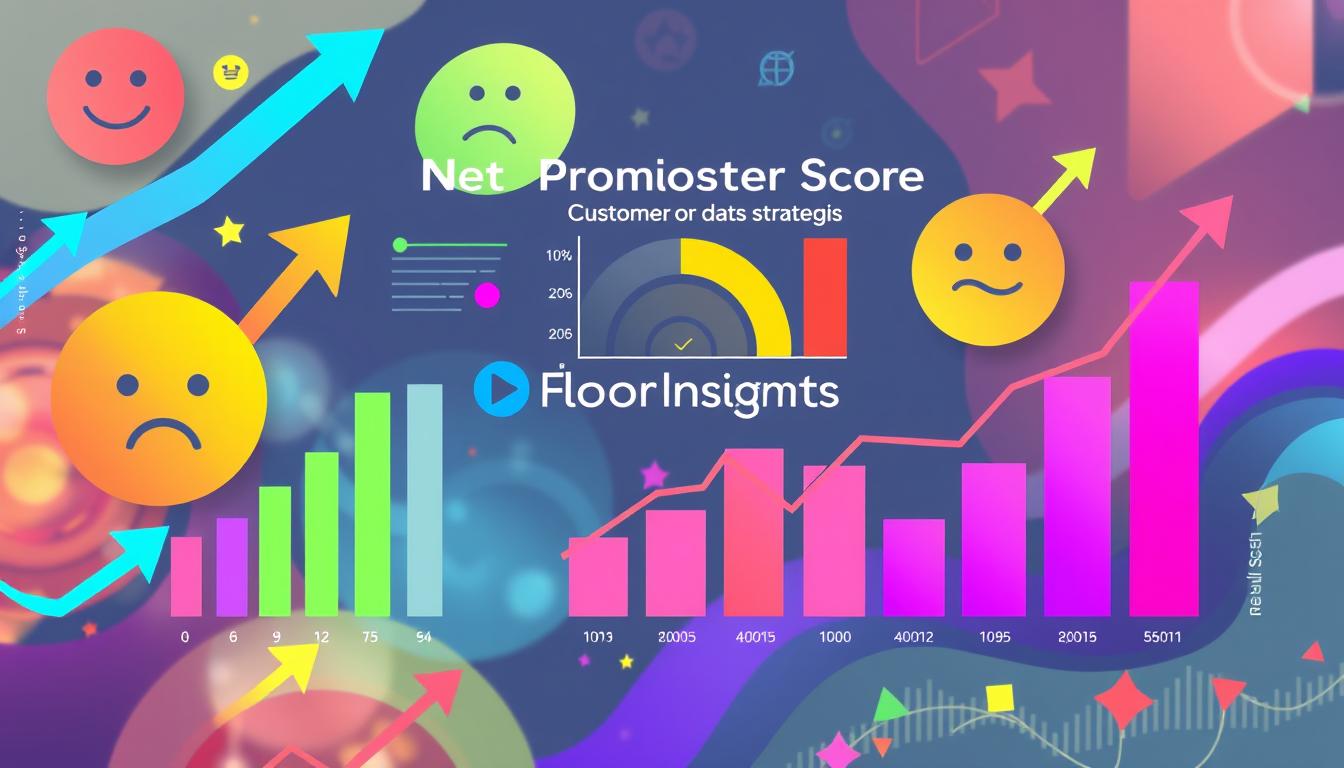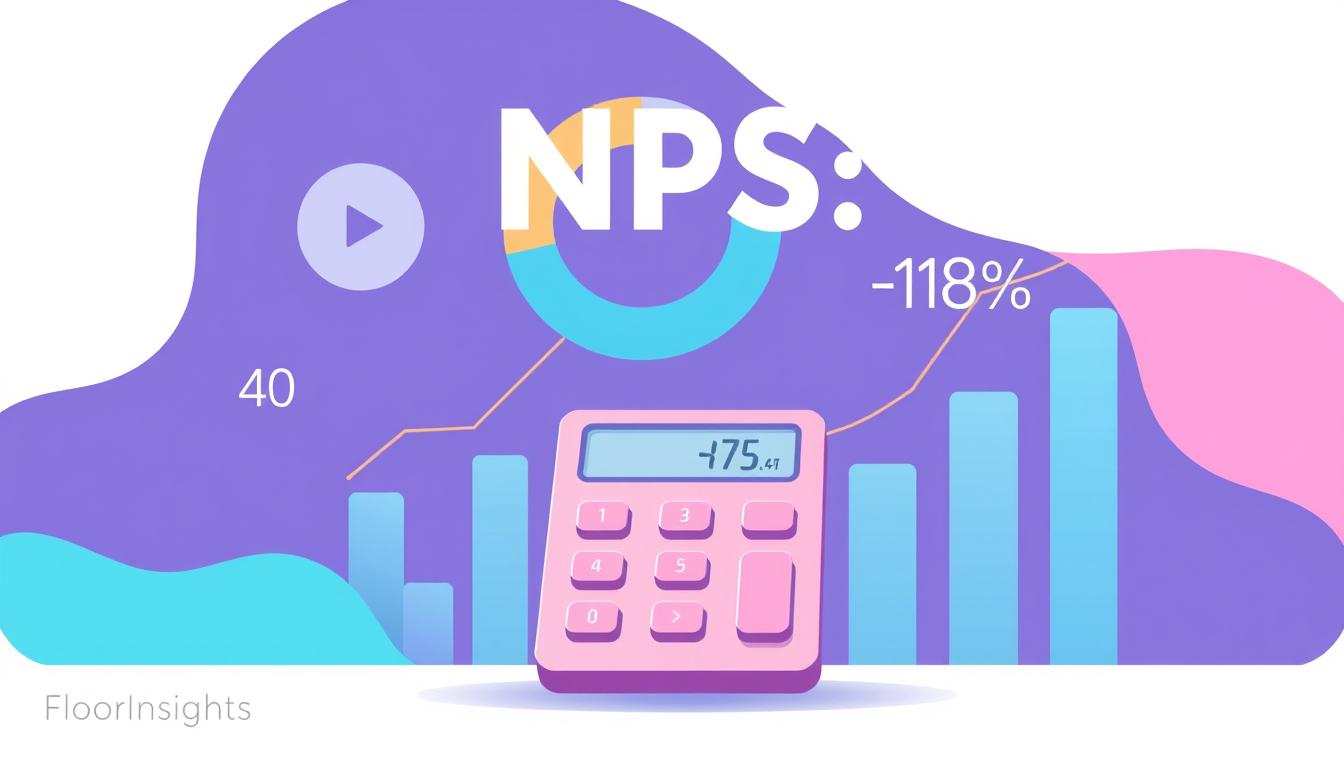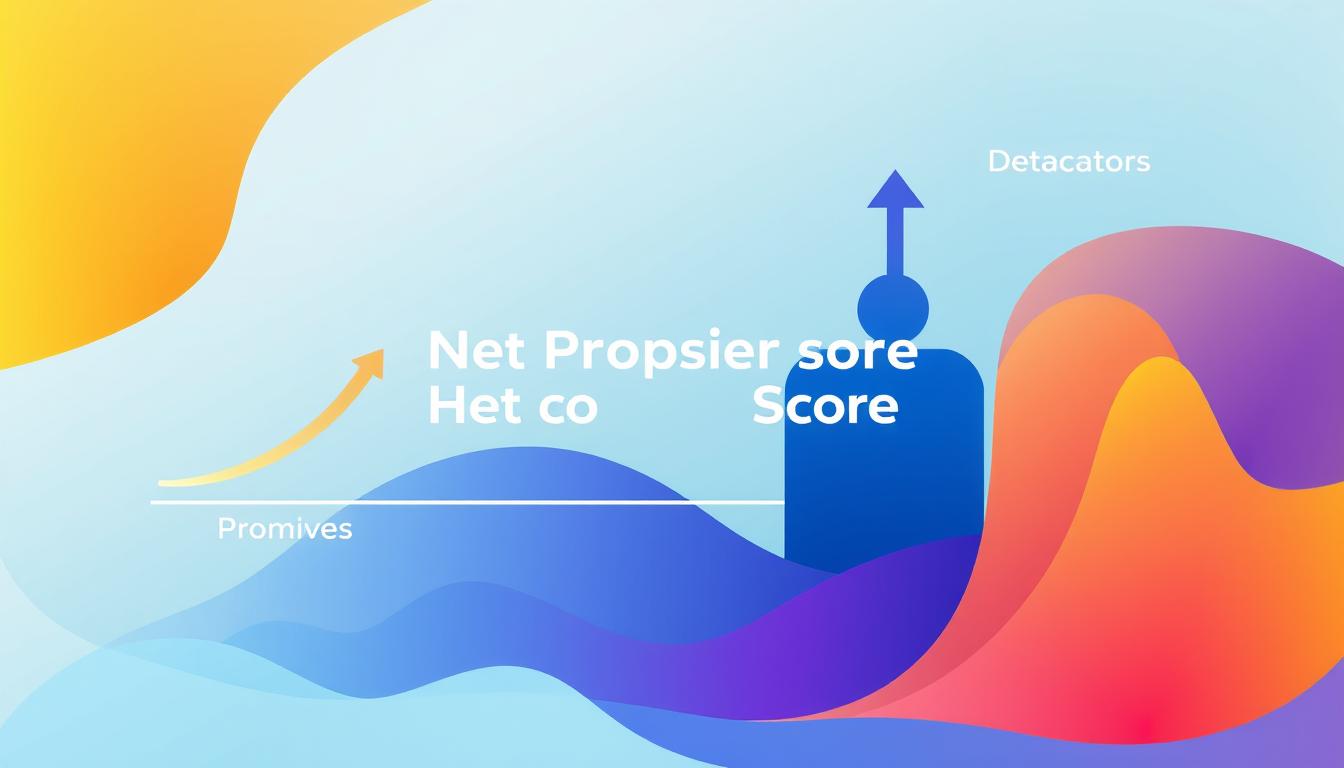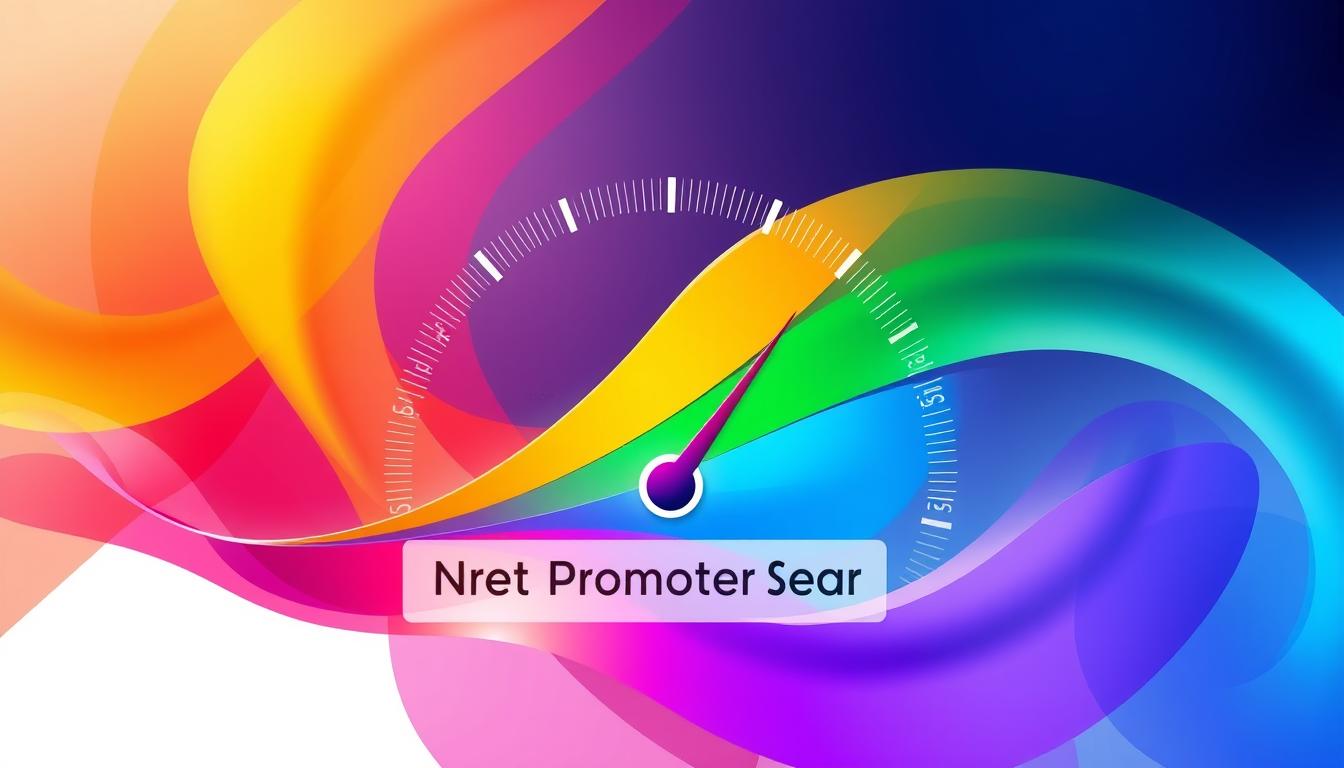In today’s competitive market, understanding and leveraging customer feedback is crucial for crafting successful marketing strategies. One powerful tool that offers valuable insights into customer satisfaction and loyalty is the Net Promoter Score (NPS). Through effective NPS analysis, we can gain a deeper understanding of our customers’ sentiments and experiences, which in turn fuels more targeted marketing campaigns aimed at boosting engagement and loyalty.
NPS data serves as a valuable asset for marketing teams, transforming customer feedback into actionable insights. By identifying promoters who are likely to advocate for our brand and detractors who signal areas for improvement, we can fine-tune our marketing efforts to resonate more effectively with different customer segments.
As we delve further into how Net Promoter Score data can be harnessed to drive impactful marketing campaigns, it’s essential to explore the methods of collecting, analyzing, and using this data to foster customer loyalty and create marketing strategies that stand out in a crowded marketplace.
Key Takeaways
- NPS data provides valuable insights into customer satisfaction and loyalty.
- Effective NPS analysis helps identify promoters and detractors within our customer base.
- Targeted marketing campaigns can be crafted based on NPS insights to improve engagement.
- NPS-driven strategies can enhance customer loyalty and retention rates.
- Transforming NPS data into actionable marketing insights is key to staying competitive.
Introduction to NPS and Its Importance
Understanding the Net Promoter Score (NPS) is crucial for any business aiming to improve customer satisfaction and drive growth. This unique metric has transformed how organizations gauge customer loyalty and satisfaction, providing actionable insights directly from the customers.
What is NPS?
The Net Promoter Score is a standardized tool that measures the likelihood of customers recommending a company’s product or service to others. Essentially, it reflects customers’ overall satisfaction and loyalty. The feedback survey contains a simple question: “On a scale of 0 to 10, how likely are you to recommend us to a friend or colleague?” Based on their responses, customers are categorized into:
- Promoters (score 9-10): Loyal enthusiasts who will keep buying and refer others, fueling growth.
- Passives (score 7-8): Satisfied but unenthusiastic customers who are vulnerable to competitive offerings.
- Detractors (score 0-6): Unhappy customers who can damage your brand and hinder growth through negative word-of-mouth.
The Significance of NPS in Marketing
Net Promoter Score importance extends beyond just measuring customer satisfaction. It is a powerful tool for predicting business growth and guiding strategic decisions in marketing campaigns. By analyzing NPS data, we can identify areas needing improvement and develop targeted promotional strategies to convert detractors into promoters. Furthermore, understanding the feedback survey results allows us to tailor our marketing efforts to enhance customer experiences and foster long-term loyalty.
By leveraging the insights from NPS, we can ensure our marketing campaigns are not only targeted but also effective in driving customer engagement and retention. In the competitive market of India, using NPS metrics enables us to stay ahead, continuously improving our customer’s journey and overall satisfaction.
Gathering NPS Data for Marketing Insights
Efficiently collecting Net Promoter Score (NPS) data allows us to gain valuable marketing insights that enhance customer experience. Employing various techniques for Net Promoter Score collection is crucial in identifying customer sentiment and forming a solid basis for our marketing strategies.
Methods to Collect NPS Data
There are several effective methods for conducting Net Promoter Score collection. One approach is through post-purchase surveys, which capture immediate customer feedback. Email campaigns are another excellent method, offering an opportunity to reach a broader audience and gather insights over time. Additionally, in-app feedback mechanisms provide real-time responses from engaged users, often yielding higher response rates.
Analyzing the NPS Data
Once collected, NPS data requires thorough analysis to uncover meaningful patterns and trends. By systematically examining this data, we can perform NPS analysis to identify specific areas of customer satisfaction or dissatisfaction. This analysis helps in tailoring personalized marketing strategies that resonate with different customer segments, ultimately improving overall customer experience.
| Collection Method | Quality of Insights | Response Rate | Examples |
|---|---|---|---|
| Post-Purchase Surveys | High | Moderate | Amazon, Flipkart |
| Email Campaigns | Medium | Varies | Zomato, Swiggy |
| In-App Feedback | Very High | High | Swiggy, Zomato |
In conclusion, the methods we choose for Net Promoter Score collection and the subsequent NPS analysis significantly impact our ability to craft personalized marketing strategies. By focusing on comprehensive and effective data collection techniques, we can better understand our customers, ultimately leading to enhanced customer experience.
Leveraging Net Promoter Score for Customer Segmentation
The Net Promoter Score application is instrumental in dividing the customer base into distinct segments: promoters, passives, and detractors. By understanding these categories, businesses can tailor their marketing strategies accordingly to drive engagement and foster customer loyalty.
Identifying Promoters, Passives, and Detractors
The foundation of effective customer segmentation using NPS lies in correctly identifying promoters, passives, and detractors. Promoters are enthusiastic customers who are highly likely to recommend your products or services. Passives are satisfied but unenthusiastic customers, while detractors are unhappy customers who can potentially damage your brand through negative word-of-mouth.
- Promoters: Score 9-10 on the NPS survey
- Passives: Score 7-8 on the NPS survey
- Detractors: Score 0-6 on the NPS survey
Creating Targeted Campaigns Based on Segments
Once customers are segmented, businesses can implement targeted campaigns that resonate with each group. This is where the Net Promoter Score application truly shines, allowing companies to tailor their messaging for optimal impact:
- Promoters: Leverage their enthusiasm by encouraging word-of-mouth referrals, offering loyalty rewards, and seeking testimonials. Marketing materials should highlight exclusivity and appreciation.
- Passives: Engage these customers by addressing their potential pain points, offering promotions to increase their loyalty, and providing detailed product information. Focus on converting them to promoters.
- Detractors: Address their concerns directly with personalized communication, quick customer support, and offers that attempt to resolve their dissatisfaction. Prioritize converting detractors into passives.
The strategic application of customer segmentation derived from the Net Promoter Score can transform how businesses interact with their audience, driving higher engagement and enhanced customer experiences.
Using NPS Feedback for Personalized Marketing
In the era of data-driven marketing, leveraging NPS feedback is crucial for creating *personalized marketing* campaigns that resonate with our audience. Understanding customer sentiments through NPS data allows us to deliver tailored content aimed at increasing customer loyalty and enhancing customer retention.

Personalizing Content for Customer Loyalty
Utilizing NPS feedback, we can transform generic marketing efforts into highly personalized content. When customers share their experiences and opinions via NPS surveys, we gain actionable insights into their preferences and expectations. This enables us to craft messages that directly address their needs, fostering deeper *customer loyalty*. For instance, Amazon effectively uses customer reviews and ratings to suggest relevant products, which significantly boosts engagement and satisfaction.
Improving Customer Retention Strategies
Personalized marketing plays a pivotal role in improving customer retention strategies. Through NPS feedback, we can identify pain points and areas for improvement, allowing us to tailor retention initiatives. Brands like Spotify use personalized recommendations based on user listening habits, derived from feedback data, to keep users engaged and satisfied. Such targeted efforts not only enhance customer experience but also solidify customer retention.
Here is a quick overview of how well-known brands leverage NPS feedback for personalized marketing:
| Brand | Personalized Marketing Initiative | Impact on Customer Loyalty | Impact on Customer Retention |
|---|---|---|---|
| Amazon | Product recommendations based on reviews | Increased customer engagement | Higher repeat purchase rates |
| Spotify | Music recommendations based on listening habits | Enhanced user satisfaction | Improved retention |
Boosting Customer Experience with NPS Insights
Enhancing the customer journey through actionable insights gleaned from the Net Promoter Score (NPS) can revolutionize our marketing strategies. By tapping into direct customer feedback, we can tailor our approaches to improve customer experience and foster stronger loyalty to our brand.
Analyzing NPS data provides us with a wealth of information about customer satisfaction and preferences. Understanding the underlying sentiments of Promoters, Passives, and Detractors enables us to make strategic changes that resonate with each group.
- Personalized Interactions: Customizing communication and offers for Promoters can enhance their loyalty and advocacy. Similarly, addressing concerns of Detractors with personalized solutions can convert them into loyal customers.
- Feedback Loop: Establishing a continuous feedback loop ensures we remain responsive to customer needs. This approach helps improve customer experience by addressing pain points promptly.
- Enhanced Service Channels: Leveraging NPS feedback to refine our service channels can lead to better customer support and overall satisfaction.
The success of these strategies can be illustrated through a detailed comparison:
| Aspect | Before NPS Insights | After NPS Insights |
|---|---|---|
| Customer Loyalty | Moderate | High |
| Customer Satisfaction | Variable | Consistently High |
| Brand Advocacy | Limited | Extensive |
Ultimately, leveraging the Net Promoter Score to drive our marketing strategies enhances the overall customer experience. By proactively addressing issues and capitalizing on positive feedback, we can strengthen customer relationships and propel our brand forward in the competitive marketplace.
Enhancing Customer Satisfaction Through Feedback Surveys
In today’s competitive market, ensuring customer satisfaction is paramount for businesses to thrive. One of the most effective methods to gauge this satisfaction is through well-structured feedback surveys.
Designing Effective Feedback Surveys
To create effective feedback surveys, we must first focus on the structure and content of the survey. This includes:
- Question Types: Utilize a mix of multiple-choice, rating scales, and open-ended questions to gather quantifiable and qualitative data.
- Length: Keep the survey concise. Aim for a completion time of 5-10 minutes to prevent respondent fatigue.
- Timing: Strategically time the surveys. For instance, shortly after a purchase or following a customer service interaction can yield timely insights.
Implementing Feedback for Sustained Satisfaction
After collecting data, the next step is to implement NPS feedback to drive continuous improvements. Here’s how:
- Analyze Results: Review and categorize feedback to identify recurring themes and urgent issues.
- Act on Insights: Develop action plans to address customer pain points and enhance positive experiences.
- Feedback Loop: Create a cycle of continuous feedback to consistently monitor and improve customer satisfaction.
By placing a strong emphasis on designing effective feedback surveys and diligently acting on the results, businesses can not only implement NPS feedback effectively but also maintain a high level of customer satisfaction.
Case Studies: Successful NPS-Driven Campaigns
In this section, we delve into two in-depth case studies illustrating how well-executed NPS-driven marketing campaigns can enhance company performance. These examples showcase the practical application of NPS data to shape effective marketing strategies, highlighting the transformative impact on business results.
Case Study 1: Company X
Company X, a leading player in the apparel industry, implemented NPS surveys to gather customer feedback. By focusing on the NPS-driven insights, they identified key pain points and areas of satisfaction among their customers. This data informed their marketing strategy, leading to several targeted campaigns aimed at different customer segments. For instance, they launched a campaign specifically for their promoters, offering exclusive previews of new collections and loyalty rewards.
- Outcome: The result was a 20% increase in repeat purchases from promoters, significantly boosting overall company performance.
- Key Learning: Personalizing campaigns for different NPS segments can yield substantial business benefits.
Case Study 2: Company Y
Company Y, an e-commerce giant, utilized NPS data to shape their customer experience strategy. They discovered through their NPS surveys that detractors primarily complained about slow customer service. By integrating this feedback into their operational changes, they developed a real-time chat service and improved their response times.
- Outcome: Post-implementation, Company Y saw a 15% improvement in their NPS score, translating into increased customer satisfaction and higher sales conversions.
- Key Learning: Addressing the specific concerns highlighted in NPS surveys can significantly uplift overall company performance.
These case studies demonstrate how NPS-driven marketing campaigns can effectively convert customer insights into actionable strategies, leading to enhanced business outcomes. Understanding customer feedback and responding with precise marketing actions not only boosts loyalty but also drives growth and profitability.
Measuring the Impact of NPS on Marketing Performance
The ultimate goal of leveraging Net Promoter Score (NPS) in marketing is to measure its impact on overall performance. To do this effectively, we must track a variety of key metrics that reflect the success of our campaigns and guide us in making data-driven decisions.
Key Metrics to Track
Several metrics can reveal the impact of NPS on marketing performance. The customer churn rate is crucial, as it indicates the percentage of customers who stop doing business with us over a specific period. Monitoring this metric can help us understand if high NPS scores correlate with customer retention.
Another vital metric is the repeat purchase rate. This tells us how often customers are coming back to make multiple purchases, which is a sign of strong customer loyalty often driven by positive NPS feedback. Lastly, the customer lifetime value (CLV) provides insights into the total revenue we can expect from a customer over the course of their relationship with our brand. Higher NPS scores usually signal higher CLV, as satisfied customers are likely to remain loyal.
Analyzing Campaign Outcomes
Analyzing the outcomes of our marketing campaigns involves assessing the return on investment (ROI) from efforts influenced by NPS data. This process includes comparing the performance of campaigns targeting promoters, passives, and detractors to evaluate their effectiveness. We can also measure engagement rates, conversion rates, and sales uplift to determine the campaigns’ success.
Tracking these results over time allows us to refine our marketing strategies, ensuring they are aligned with customer feedback. By continually monitoring and analyzing these key metrics, we can adapt our tactics to maximize customer satisfaction and drive growth, making NPS a powerful tool in our marketing arsenal.
FAQ
What is NPS?
Net Promoter Score (NPS) is a standardized metric used to gauge customer loyalty and satisfaction. It is derived from customer responses to a single key question: How likely are you to recommend our product or service to others? The responses categorize customers into promoters, passives, or detractors, providing insights into overall customer sentiment.
How is NPS data collected?
NPS data can be collected using various methods such as post-purchase surveys, email campaigns, or in-app feedback mechanisms. These approaches enable businesses to capture direct feedback from customers on their experiences and loyalty.
Why is NPS important for marketing?
NPS is a crucial metric for marketing because it helps predict customer retention and business growth. By understanding customer loyalty and satisfaction through NPS, marketing teams can craft more targeted and impactful campaigns, ultimately enhancing the customer experience and driving higher engagement and conversion rates.
How do we analyze NPS data?
Analyzing NPS data involves examining the feedback to discern customer sentiment trends and patterns. This can be done using specialized software tools that help categorize responses and identify key areas of improvement or strength, thus allowing businesses to make data-driven decisions for better marketing strategies.
What is the significance of customer segmentation in NPS?
Customer segmentation in NPS involves categorizing customers into promoters, passives, or detractors. Each group provides unique insights and requires different marketing strategies. Understanding these segments allows businesses to create targeted campaigns that cater to the specific needs and preferences of each group, enhancing customer loyalty and retention.
How can NPS feedback be used in personalized marketing?
NPS feedback allows businesses to transition from generic marketing approaches to personalized content that resonates more with customers. By addressing the specific needs and preferences highlighted in the feedback, companies can create loyalty-driven campaigns that improve customer retention and satisfaction.
What are some methods to boost customer experience using NPS insights?
Businesses can use NPS insights to refine various aspects of the customer experience. This might involve improving product features, enhancing customer service, or making process adjustments based on the feedback. These changes can lead to stronger relationships with customers and better marketing outcomes.
How do we design effective feedback surveys?
Effective feedback surveys should be concise, relevant, and easy to complete. They should include a mix of open-ended and closed-ended questions to gather comprehensive insights. Timing is also crucial; sending surveys at the right moments, such as post-purchase, can significantly improve response rates and the quality of feedback.
How do we implement feedback for sustained customer satisfaction?
Implementing feedback involves acting on the insights gained from NPS data. This includes making necessary changes to products, services, or customer interactions based on the feedback. Maintaining a feedback loop and continuously improving based on new data helps sustain high levels of customer satisfaction over time.
What metrics should we track to measure the impact of NPS on marketing performance?
Key metrics to track include customer churn rate, repeat purchase rate, and customer lifetime value. Analyzing these metrics helps businesses understand the effectiveness of their marketing strategies influenced by NPS data and informs future planning to enhance marketing performance.






